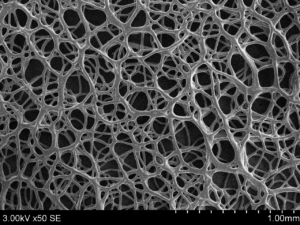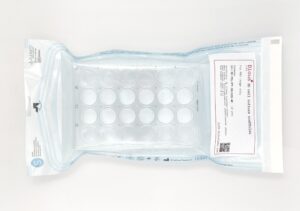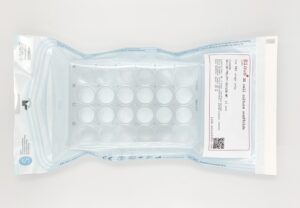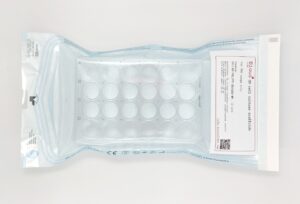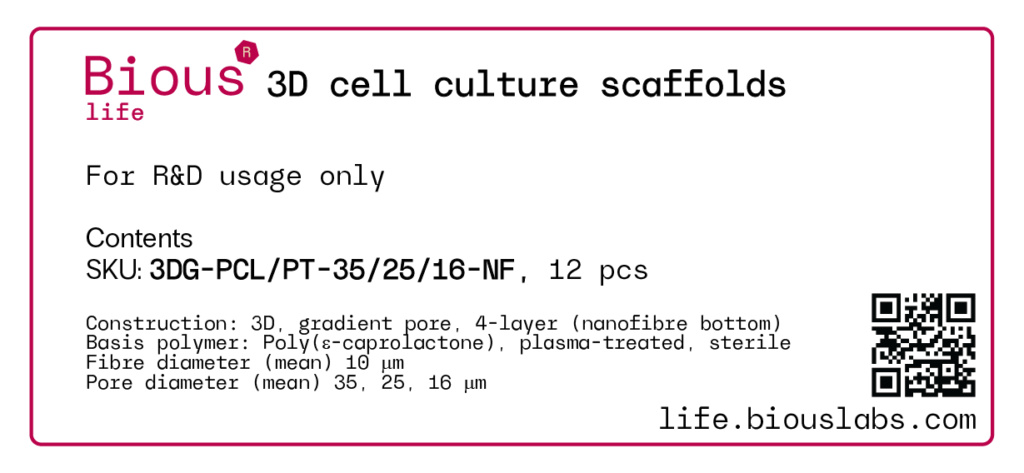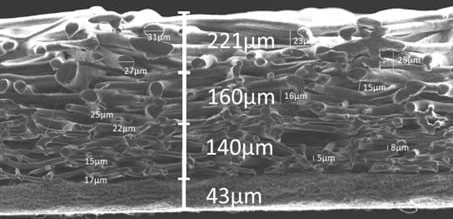Products
3D cell culture scaffolds designed as two-layer constructs:
- The top layer features a unique matrix of fibres and pores fabricated by the proprietary 3D fibre printing method, and serves as a matrix hosing cells.
- The bottom layer features a dense network of nanofibres forming a cell impenetrateable membrane, preventing cell migration to the well floor.
2-Layer Scaffolds
FINE
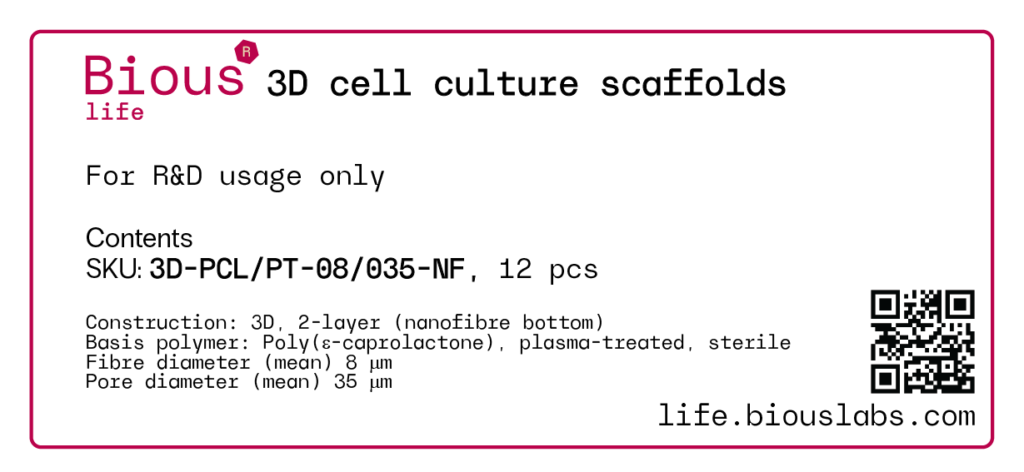
SKU: 3D-PCL/PT-08/035-NF
Fibre diameter (mean) 8 µm
Pore diameter (mean) 35 µm
Basis polymer: PCL, plasma-treated
Water contact angle 40° – 70°
Specifications:
- Construction: 3D, 2-layer (nanofibre bottom)
- Scaffold diameter: 15 mm
- Pieces of scaffolds per plate: 12
- Scaffold thickness: 200 ± 20 µm
- Scaffolds placed in 24 well plate
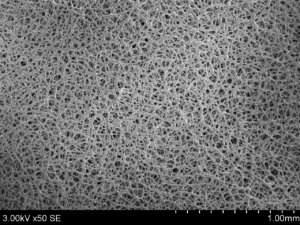
MEDIUM
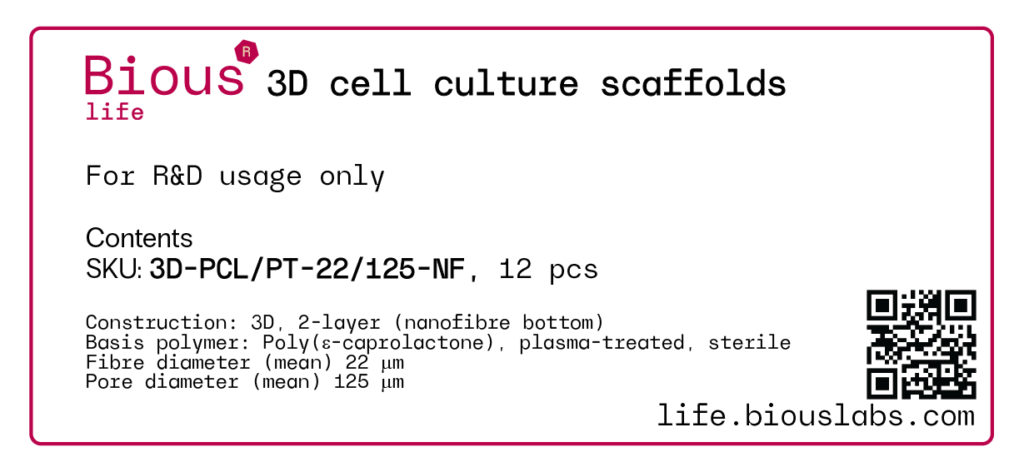
SKU: 3D-PCL/PT-22/125-NF
Fibre diameter (mean) 22 µm
Pore diameter (mean) 125 µm
Basis polymer: PCL, plasma-treated
Water contact angle 40° – 70°
Specifications:
- Construction: 3D, 2-layer (nanofibre bottom)
- Scaffold diameter: 15 mm
- Pieces of scaffolds per plate: 12
- Scaffold thickness: 200 ± 25 µm
- Scaffolds placed in 24 well plate
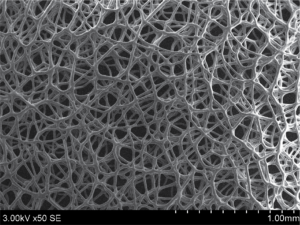
COARSE
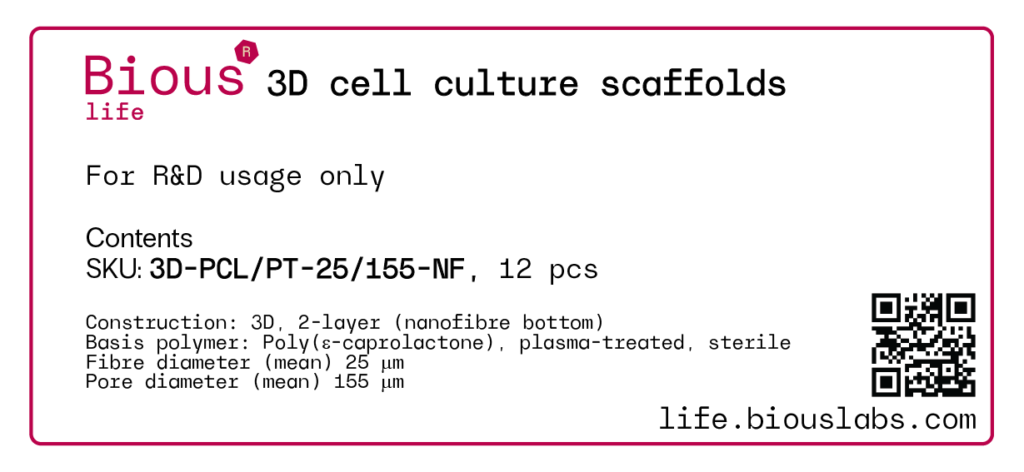
SKU: 3D-PCL/PT-25/155-NF
Fibre diameter (mean) 25 µm
Pore diameter (mean) 155 µm
Basis polymer: PCL, plasma-treated
Water contact angle 40° – 70°
Specifications:
- Construction: 3D, 2-layer (nanofibre bottom)
- Scaffold diameter: 15 mm
- Pieces of scaffolds per plate: 12
- Scaffold thickness: 200 ± 25 µm
- Scaffolds placed in 24 well plate
